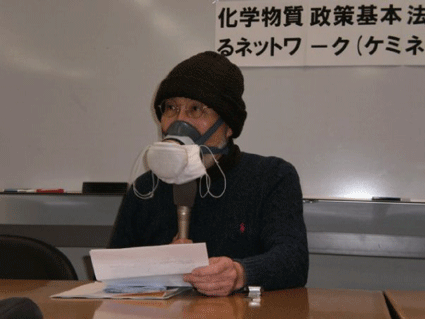
Scientists and NGOs concerned about the health impacts of bisphenol A
PRESS RELEASE, 23rd JUNE 2010
An unprecedented 60 scientists and international environment, health and women’s organisations from around the globe have jointly written to the European Food Safety Authority (EFSA) stating that
“action is necessary to reduce the levels of Bisphenol-A (BPA) exposure, particularly in groups at highest risk, namely young infants and pregnant mothers.”
[Quotes from some of the participating scientists and NGOs can be found towards the end of this release.]
In total, 41 NGOs and 19 scientists from 15 countries from across the globe (including 9 from the UK) have signed the letter. The letter comes on the eve of a new scientific opinion to be released by the EFSA on the safety of Bisphenol A in food contact materials expected in early July 2010. EFSA was requested by the European Commission to assess the latest science on Bisphenol A, and if necessary, to update the existing Tolerable Daily Intake (TDI) (a specific amount in food or drinking water that can be ingested (orally) over a lifetime without an appreciable health risk).
Bisphenol A is a mass produced chemical used in the manufacture of polycarbonate plastics that are clear and nearly shatter-proof. It can be found in plastics used for food and beverages, such as baby bottles, sports water bottles, as an epoxy resin in canned food and drinks, plastic food storage containers, tableware and in other products, including dental sealants, and has been found to leach into food and drink.
There have been long standing concerns about the health impacts of bisphenol A, due to scientific studies that have shown it has hormone disrupting effects at extremely low levels of exposure. Human bio-monitoring studies have shown that the vast majority of people in developed countries are exposed to Bisphenol-A.
EFSA’s previous opinions in 2007 and 2008 predominantly relied upon a handful of industry backed scientific papers that have expressed no concerns about our levels of BPA exposure. The letter from scientists and NGOs highlights scientific criticism in academic journals regarding these papers as compared to the “several hundred peer reviewed scientific papers have been published that have highlighted potential adverse health effects associated with BPA exposures”
The letter also draws attention to some of the new studies which have raised risks of exposure relating to a potential increased likelihood of developing ‘diabetes’, ‘developmental programming’ and ‘breast cancer’. Bisphenol A exposure at environmentally relevant levels commonly found in the environment in developed countries has also been repeatedly linked by independent university – based scientists to a number of other serious chronic health conditions.
Despite EFSA’s pivotal position in setting chemical food safety levels across the EU, Sweden and Germany have become the third and fourth most recent EU member states, alongside France and Denmark, to take action ahead of the EFSA review.
Andreas Carlgren, Sweden’s Environment Minister stated, on 11th May 2010, that
“If the EU will not quickly forbid the hormone disrupting substance bisphenol in baby-bottles Sweden will precede with a national prohibition.”
The President of the German Federal Environment Agency on the 9th June also broke from EFSA policy by issuing new guidance calling on
“manufacturers, importers and users of bisphenol A to use alternative substances that pose less risk to human health and the environment in all areas of use that significantly contribute to exposure”.
Regulators in Canada and the USA have already taken action to limit BPA exposure, for example in its use in baby bottles. As yet there has been no similar action at the European Union level.
A number of EU member states continue to back a common approach across the EU on bisphenol A. Tim Smith, the head of the UK Food Standards Agency, declared in an internal FSA report on the 12th May, 2010 that he ‘considers it important to have an agreed position across the EU’ and that the FSA will only ‘revise our position in line with it the EFSA Review if it is considered necessary’, despite the action that is being taken elsewhere across the EU.
The EFSA have already delayed publication of its review, as explained on its website:
To give the European Commission an up-to-date overview of the safety of BPA, EFSA will now deliver a scientific opinion in early July rather than end of May. This is due to the need for the Panel to consider hundreds of studies in its review and analysis of the most recent scientific literature.
The letter from scientists and organisations opens by ‘welcoming this announcement’ issued at the 11th hour that EFSA has finally agreed to examine hundreds of non-industry backed scientific papers.
The letter was drafted by Breast Cancer UK and Prof. Fredrick vom Saal, Curators Professor of Biological Sciences, University of Missouri-Columbia who has been awarded by his peers for his work on Bisphenol-A and is a recognised leader in this field. The effort was also coordinated by the Brussels based Health and Environment Alliance (HEAL).
Prof. vom Saal stated in response to the publication of the letter that:
“At the heart of the debate over BPA lies an outdated set of guidelines used by regulatory agencies that are based on approaches to evaluating the safety of chemicals established over 50 years ago. Thus, 21st century research approaches have provided overwhelming scientific evidence of harm in hundreds of published reports, but these findings are being rejected for consideration because they do not conform to the outdated testing guidelines.
“This has left regulatory agencies to rely entirely on industry-funded research that used ‘approved’ testing methods that are crude and insensitive, and it is not surprising that 100% of these industry-funded studies conclude that BPA causes no harm.
“The only rational path for European regulators is to take decisive action to reduce human exposure to BPA. The overwhelming nature of the total scientific evidence mandates this as a priority.”
Clare Dimmer, Chair of Trustees Breast Cancer UK and former breast cancer patient stated:
“Breast cancer is the most common cancer across Europe and has been increasing rapidly regardless of the costly and expensive efforts made by Governments to improve screening, treatment, and increase research. It must now be time that regulators act on the science and begin to take a precautionary approach to hazardous chemicals like bisphenol-A found in our everyday products.”
Lisette van Vliet, Ph.D. the Toxics Policy Advisor at HEAL said:
“It is high time that EFSA caught up to the overwhelming science showing genuine reasons for concern about our daily exposure to BPA.”
Participating scientists and organisations were given the opportunity to provide a quote for this press release; those that responded have been included below. This does not preclude participating organisations providing their own releases, supporting statements and additional comments.
Prof. Andrew Watterson, Occupational and Environmental Health Research Group, University of Stirling, said:
“It’s worrying, considering the weight of the scientific evidence, that strong action to reduce human exposure is yet to be taken. Hundreds of academic studies have explicitly raised the risks of developmental harm to foetuses and young children from exposure to BPA and this should dictate a strong precautionary policy response from European regulators. If this is not forthcoming, the UK Government must intervene as other European countries are already doing so.”
Daniela Hoffmann, Chemicals Expert, GLOBAL 2000/Friends of the Earth Austria:
“EFSA has to finally acknowledge the overwhelming scientific evidence concerning the risk BPA poses to human health.”
Sarah Häuser, Chemicals Expert BUND / Friends of the Earth Germany:
“The existing Tolerable Daily Intake for BPA does not protect human health. In animal experiments and biomonitoring studies, BPA doses much smaller than those estimated as being safe by EFSA were linked to chronic conditions health damages like diabetes and cardiovascular diseases. It’s time to take action now.”
For further information please contact:
Hratche Koundarjian, Campaign Manager, Breast Cancer UK, Charity No: 1088047, T: 07905 911 039, E: hratche@breastcanceruk.org.uk, W: www.breastcanceruk.org.uk / www.nomorebpa.org.uk
–
Letter and Signatories:
Prof. Klaus-Dieter Jany, Chair of the CEF Panel
European Food Safety Authority
Largo N. Palli 5/A, 43121 Parma, Italy
23rd June 2010
Dear Prof. Jany,
We are writing to welcome the announcement on the European Food Safety Authority (EFSA) website that the CEF panel will be considering ‘hundreds of studies in its review and analysis of the most recent scientific literature’ in its review of the TDI of bisphenol-A in food contact products.
Over the last decade and a half, a substantive body amounting to several hundred peer reviewed scientific papers, have been published that have highlighted potential adverse health effects associated with BPA exposures, at internal doses relevant to levels of biologically active BPA found in humans.
As a March 2010 Review (Vandenberg et al) of 80 bio-monitoring studies of BPA in Environmental Health Perspectives makes clear;
‘The two toxicokinetic studies performed to date, which suggest that human exposure is negligible, have significant flaws and are therefore not reliable for risk assessment purposes.’
However, in its prior risk assessments of BPA, EFSA only relied on a small number of studies rather than the much larger number that the United States Food and Drug Administration recently recognised as valid and of high utility in its risk assessment of BPA, and which led the FDA to express concern about the health hazards posed by BPA.
Only a tiny minority of studies have articulated that BPA exposure is completely safe, and many of these research papers have been criticised in academic commentaries and responses as having serious flaws, but it is these few flawed studies that EFSA previously relied on to declare BPA safe.
For example, a letter co-authored by 24 scientists published in the February 2010 edition of Toxicological Sciences states;
‘Publishing studies that conclude no harm in response to low doses of endocrine disrupting chemicals, when the studies did not include a positive control (Tyl et al., 2002), included inappropriate doses of positive controls (Ryan et al., 2009; Tyl et al., 2008), or included positive controls that showed no effect (Cagen et al., 1999), is inappropriate in peer-reviewed journals (Myers et al., 2009a,b; vom Saal and Welshons, 2006). Such studies violate basic principles of study design.’
Many scientific studies are now calling into question the safety of BPA. For example, a recent study has highlighted that BPA may contribute to metabolic disorders relevant to glucose homeostasis, and suggests that BPA may be a risk factor for diabetes (Alonso-Magdalena et al., 2010). Moreover, experiments at Yale university report that BPA may induce altered developmental programming (Bromer et al.,2010), and Doherty et al (2010) of Yale university have published a study which raises the concern about epigenetic effects of BPA on the regulation of the mammary gland, with potential implications for breast cancer risk. Endometriosis is also a concern as work by Signorile et al (2010) highlights that pre-natal exposure of mice to bisphenol-A causes an endometriosis-like response in female offspring.
It is therefore our opinion that any objective and comprehensive review of the scientific literature will lead to the conclusion that action is necessary to reduce the levels of BPA exposure, particularly in groups at highest risk, namely young infants and pregnant mothers.
There are an increasing number of countries that are either already committed to this course of action, or have signalled that they will soon be undertaking similar measures.
We share the concerns of these Governments and regulators and believe that reducing BPA exposure to these groups is both scientifically sound and in the best interest of public health.
As such, we call on you as the Chair of the CEF panel and the CEF Committee Members in their ongoing review to include all relevant studies, including bio-monitoring studies, and based on that evidence we conclude that there is a strong scientific mandate for action.
Yours sincerely,
- Benson Akingbemi, Associate Professor, Department of Anatomy, Physiology and Pharmacology, Auburn University, Auburn, USA.
- Prof. Dr. Ibrahim Chahoud, Institute of Clinical Pharmacology and Toxicology, Dept. of Toxicology, Charité – Universitätsmedizin Berlin
- André Cicolella, Dipl Eng chemist-toxicologist.
- Prof. Patricia Hunt, Meyer Distinguished Professor, School of Molecular Biosciences, Washington State University
- Prof. Maricel V. Maffini. Ph.D. Research Assistant Professor. Department of Anatomy and Cellular Biology, Tufts University School of Medicine
- Jane Muncke, Ph.D, Environmental Toxicologist, Emhart Glass SA, Switzerland.
- John Peterson Myers, Ph.D., Chief Scientist, Environmental Health Sciences, Charlottesville VA.
- Angel Nadal, PhD, Professor of Physiology, Instituto de Bioingeniería and CIBERDEM, Universidad Miguel Hernández de Elche, Spain.
- Dr John Newby, Medical Information Scientist for the Cancer Prevention Society and Former Member of the Developmental Toxico-Pathology Research Group, Department of Human Anatomy & Cell Biology, Faculty of Medicine, University of Liverpool.
- Prof. Jörg Oehlmann, Goethe University Frankfurt am Main, Institute for Ecology, Evolution and Diversity.
- Prof. Gail S. Prins, PhD, Professor of Physiology, Department of Urology, University of Illinois at Chicago.
- Prof. Fredrick vom Saal, Curators Professor of Biological Sciences, University of Missouri-Columbia.
- Prof. Pietro Giulio Signorile, President of the Italian Endometriosis Foundation.
- Prof. Ana M Soto, MD, Department of Anatomy and Cell Biology, Tufts University, School of Medicine.
- Prof. Hugh S. Taylor, M.D., Professor of Molecular, Cellular and Developmental Biology, Department of Obstetrics, Gynecology and Reproductive Sciences, Yale University.
- Laura N. Vandenberg, PhD, Postdoctoral Fellow, Center for Regenerative and Developmental Biology, Tufts University.
- Prof. Cheryl S. Watson, PhD, Professor, Biochemistry & Molecular Biology Dept. University of Texas, Medical Branch, Galveston.
- Prof. Andrew Watterson, Occupational and Environmental Health Research Group, University of Stirling.
- Prof. R. Thomas Zoeller, Biology Department, Morrill Science Center, University of Massachusetts.
-
- Action for Breast Cancer, Malta
- Alliance for Cancer Prevention, UK
- Arnika, Czech Republic
- Association for Environmental and Chronic Toxic Injury, Italy
- Austrian section of ISDE (International Society of Doctors for the Environment), Austria
- Breast Cancer Fund, USA
- Breast Cancer UK, UK
- BUND / Friends of the Earth Germany, Germany
- Cancer Prevention and Education Society, UK
- ChemSec –International Chemical Secretariat, International
- CHEM Trust, UK
- Chemical Sensitivity Network, Germany
- Clean Air Action Group, Hungary
- Comité pour le Développement Durable en Santé, France
- Danish Consumer Council, Denmark
- The Danish Ecological Council, Denmark
- Eco-Accord Program on Chemical Safety, Eastern Europe, Caucasus and Central Asia
- EcoAid, Germany
- Ecologistas en Acción, Spain
- Environmental Health Fund, USA
- Environment Illinois, USA
- European Environmental Bureau, EU
- Finnish Association for Nature Conservation, Finland
- Friends of the Earth Spain, Spain
- Global 2000 / Friends of the Earth Austria, Austria
- Health and Environmental Network, Europe
- Health Care Without Harm, International
- Indiana Toxics Action, USA
- Instituto Sindical de Trabajo Ambiente y Salud, Spain
- The Irish Doctors’ Environmental Association, Ireland
- Italian Endometriosis Foundation, Italy
- Plastic Planet, Austria
- Rachel’s Friends Breast Cancer Coalition, USA
- Réseau Environnement Santé, France
- Society for Sustainable Living, Czech Republic
- Unison, UK
- VHUE e.V., Germany
- Women in Europe for a Common Future, Europe
- Women’s Environmental Network, Scotland
- Women’s Voices for the Earth, USA
- WWF European Policy Office, Europe
-
References
- Vandenberg LN, Chauhoud I, Heindel JJ, Padmanabhan V, Paumgartten FJ, Schoenfelder G 2010. Urinary, Circulating and Tissue Biomonitoring Studies Indicate Widespread Exposure to Bisphenol A. Environ Health Perspect :-. doi:10.1289/ehp.0901716
- vom Saal FS, Akingbemi BT, Belcher SM, Crain DA, Crews D, Guidice LC, Hunt PA, Leranth C, Myers JP, Nadal A, Olea N, Padmanabhana V, Rosenfeld CS, Schneyer A, Schoenfelder G, Sonnenschein C, Soto AM, Stahlhut RW, Swan SH, Vandenberg LN, Wang H, Watson CS, Welshons WV and Zoeller RT. 2010. Flawed Experimental Design Reveals the Need for Guidelines Requiring Appropriate Positive Controls in Endocrine Disruption Research. Toxicological Sciences 2010 115(2):612-613; doi:10.1093/toxsci/kfq048
- Alonso-Magdalena P, Vieira E, Soriano S, Menes L, Burks D, Quesada I, et al. 2010. Bisphenol-A Exposure during Pregnancy Disrupts Glucose Homeostasis in Mothers and Adult Male Offspring. Environ Health Perspect :-. doi:10.1289/ehp.1001993
- Bromer JG, Zhou Y, Taylor MB, Doherty L, Taylor HS. Bisphenol-A exposure in utero leads to epigenetic alterations in the developmental programming of uterine estrogen response. FASEB J. 2010 Feb 24. [Epub ahead of print] PubMed PMID: 20181937.
- Doherty L, Bromer JG, Zhou Y, Aldad TS and Taylor HS. In Utero Exposure to Diethylstilbestrol (DES) or Bisphenol-A (BPA) Increases EZH2 Expression in the Mammary Gland: An Epigenetic Mechanism Linking Endocrine Disruptors to Breast Cancer. Hormones and Cancer. DOI: 10.1007/s12672-010-0015-9.
- Signorile PG, Spugnini EP, Mita L, Mellone P, D’Avino A, Bianco M, Diano N, Caputo L, Rea F, Viceconte R, Portaccio M, Viggiano E, Citro G, Pierantoni R, Sica V, Vincenzi B, Damiano G. Mita DG, Baldi F and Baldi A. Pre-natal exposure of mice to bisphenol A elicits an endometriosis-like phenotype in female offspring. General and Comparative Endocrinology. doi:10.1016/j.ygcen.2010.03.030.
—
German Translation by CSN:
60 Wissenschaftler und NGOs appellieren an EFSA






